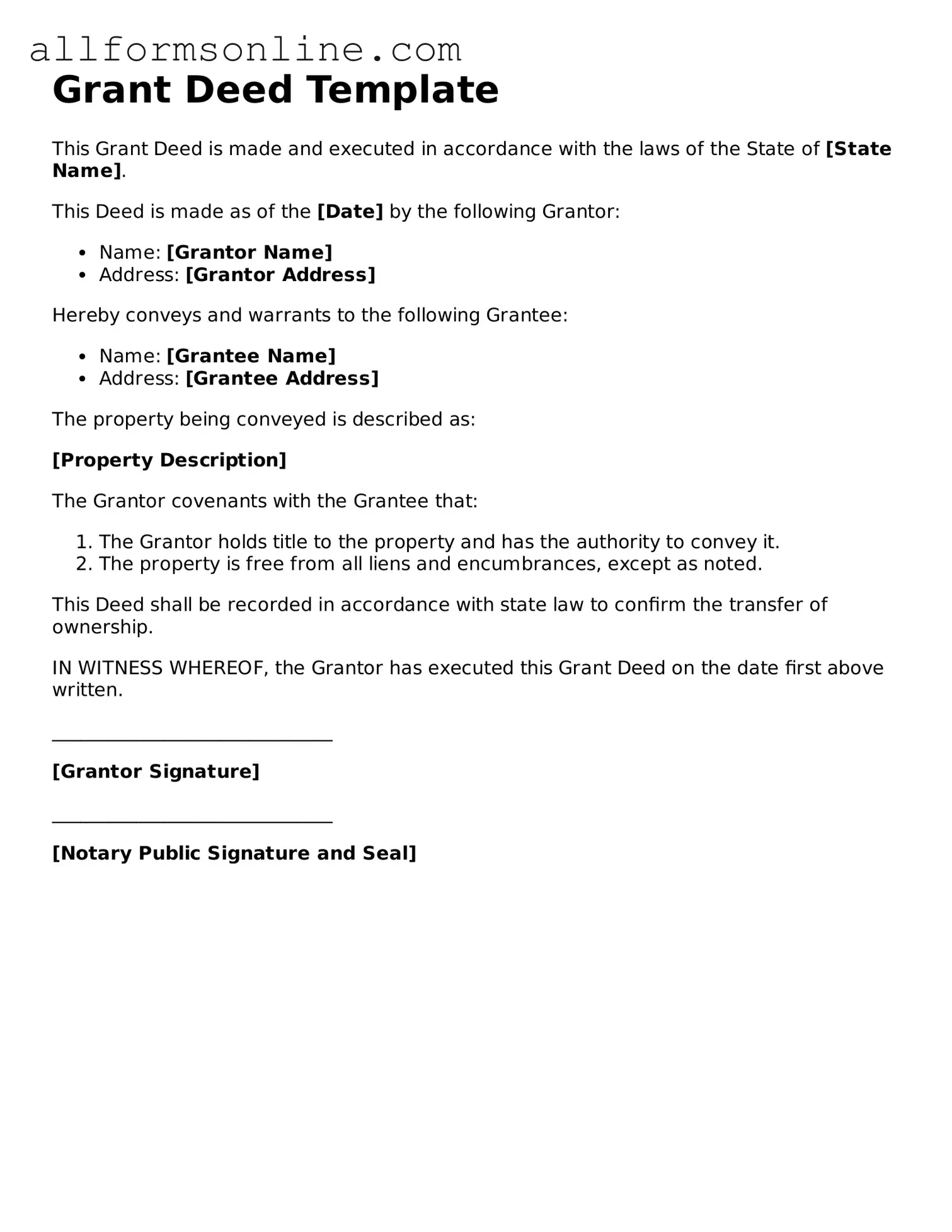What is a Deed form?
A Deed form is a legal document that represents a formal agreement or contract between parties. It is used to convey property rights, establish ownership, or document significant transactions. Unlike regular contracts, a deed does not require consideration to be valid, meaning it can be executed without the exchange of money or services.
What are the different types of Deed forms?
There are several types of Deed forms, including but not limited to: Warranty Deeds, Quitclaim Deeds, and Special Purpose Deeds. A Warranty Deed guarantees that the grantor holds clear title to the property and has the right to sell it. A Quitclaim Deed transfers whatever interest the grantor has in the property without any warranties. Special Purpose Deeds, such as Trustee Deeds or Personal Representative Deeds, serve specific legal functions.
Who needs to sign a Deed form?
Typically, a Deed form must be signed by the grantor, who is the person transferring the property. Depending on the type of deed and the jurisdiction, the grantee, or the person receiving the property, may also need to sign. Additionally, notarization is often required to validate the document.
How do I fill out a Deed form?
Filling out a Deed form involves providing accurate information about the parties involved, the property being transferred, and any relevant terms. Ensure that all names are spelled correctly and that the property description is clear and specific. It is advisable to consult with a legal professional to ensure that the form is completed correctly and meets all legal requirements.
Is a Deed form required for all property transfers?
While most property transfers require a Deed form, certain transactions may not need one. For example, transfers between spouses or transfers that occur as part of a court order may have different requirements. Always check local laws to determine if a Deed is necessary for your specific situation.
What happens after a Deed form is signed?
Once a Deed form is signed, it typically needs to be recorded with the appropriate government office, such as the county recorder or land registry office. Recording the deed provides public notice of the property transfer and protects the rights of the new owner. Failure to record may lead to complications in establishing ownership.
Can a Deed form be revoked or changed?
Generally, a Deed form cannot be revoked once it has been executed and delivered. However, under certain circumstances, a new deed can be created to change the terms or revert the property back to the original owner. Legal advice is recommended to navigate these changes appropriately.
Are there any fees associated with a Deed form?
Yes, there may be fees associated with preparing, signing, and recording a Deed form. These can include notary fees, attorney fees, and recording fees charged by the local government. It's essential to budget for these costs when planning a property transfer.
Where can I obtain a Deed form?
Deed forms can often be obtained from local government offices, such as the county recorder's office, or from legal stationery stores. Many online resources also provide templates for various types of Deed forms. However, ensure that the form you choose complies with your state’s laws and requirements.
